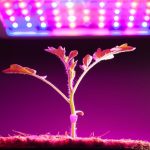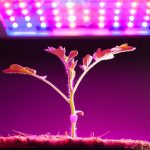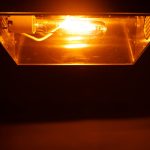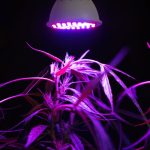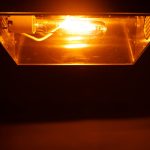Growing lights are popular with gardeners and cannabis growers but do LED grow lights emit UV rays that could be harmful?
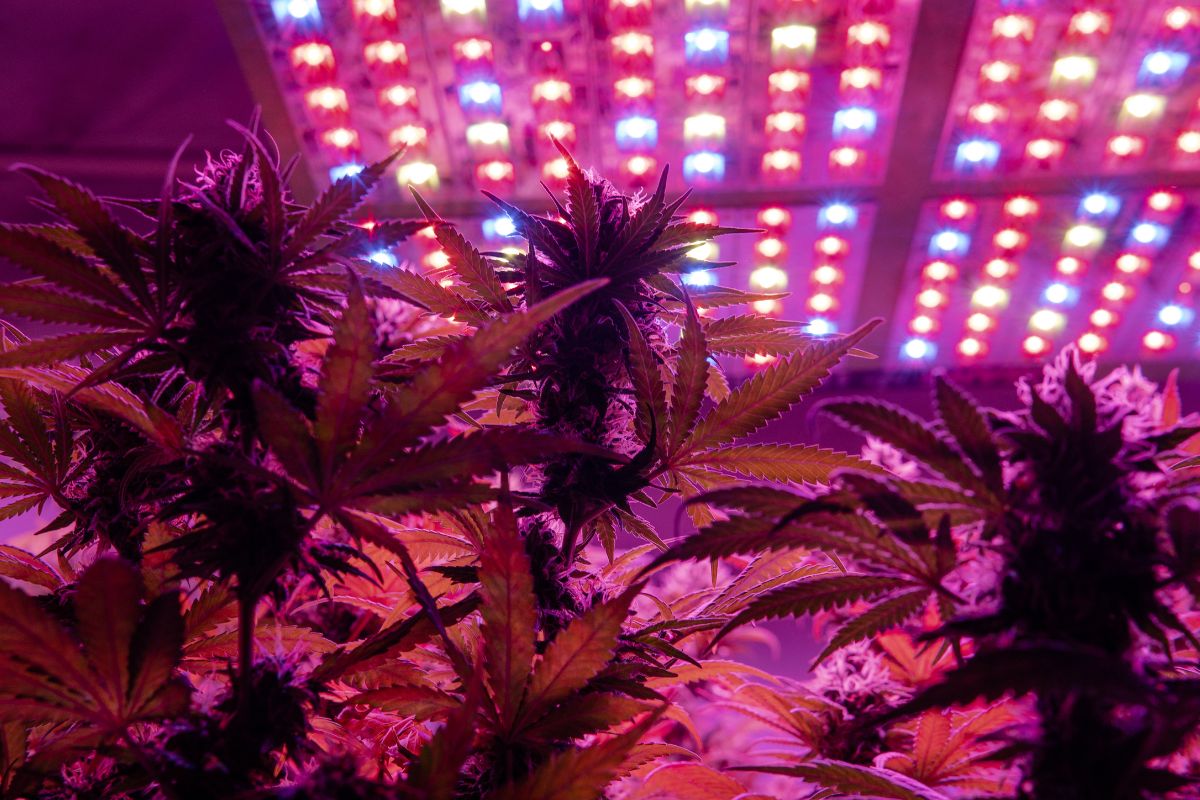
While most grow lights emit some form of UV rays, LED grow lights are designed to produce only a minimal amount of UV.
In this practical guide, we find out how much UV an LED lighting system can produce and what you need to look out for when handling this type of lighting.
Do LED Grow Lights Emit UV?
Yes, LED grow lights can emit a small amount of UV rays. This being said, the majority of standard LED household lights produce hardly any ultraviolet light.
The sun and many artificial light sources, including tanning beds and high intensity discharge lights, produce UV light because they are powerful.
Extended exposure to UV light, also known as ultraviolet radiation, is considered harmful to the skin. It can cause cancer and other skin-related health problems.
That’s the reason why many classic LED lights in your home emit very little UV light.
How Much UV Do LED Lights Emit?
LED lights commonly have a narrow spectral peak that sits around the wavelength they were designed for. However, some LED lights can still produce ultraviolet photons.
For example, blue LED lights can produce 450nm which makes up 0.05% UV photons of the entire light spectrum. This means that only one out of 2,000 photos that this light emits is part of the UV range.
This is a very small amount, compared to other lighting sources.
Are LED Lights Considered UV?
No, LED lights are sold as non-UV lights and many lighting brands claim that their LEDs don’t create any UV rays.
However, this is not accurate as LED lights always produce a small amount of ultraviolet light. For many manufacturers, this amount is below the level of unsafe UV light exposure.
Are LED Grow Lights Safe For Skin?
Yes, small LED grow lights are considered safe for the skin because they don’t produce a large amount of UV.
This being said, LED grow lights with a higher intensity may also emit UV rays which could pose a risk to people with a history of skin cancer or skin conditions.
It is best to keep your exposure to ultraviolet radiation from your grow lamps to a minimum. You can either wear long-sleeve shirts when handling the light or use a grow light with lower UV intensities.
Can LED Grow Lights Damage Your Eyes?
In addition to a greater cancer risk, LED grow lamps may damage the corneas of your eyes.
Some studies have also shown that extended LED exposure to blue lights can cause oxidative stress and even premature aging.
If you are using a high-intensity blue LED light, then make sure that you use glasses with amber lenses that can protect your eyes from damage.
Is It Safe To Leave LED Grow Lamps On All Day?
Yes, it is absolutely safe to leave your LED grow lights on all the time. However, it is important to consider if this is necessary.
Most plants, including cannabis, only require a set time of darkness every day. This means that you will also have to switch off your lights to allow your plants to regulate themselves.
The time that you want to use your LED lamps depends on the intensity of the light and the growing stage of your plants.
As a rule of thumb, you should vary the wavelength of your light according to the growing phase of your plants.
For example, your cannabis plants require red radiation (700nm) for effective photosynthesis, while they need blue light (450nm) during the vegetative stage and the flowering phase.
Potential Health Risks From LED Light Exposure
LED grow lights help your plants to grow as if they were exposed to natural sunlight. In fact, these lights are designed to replicate the sun.

This makes them very effective for your plants but high exposure levels of LED light can cause greater risks to growers.
The dangers of LED light vary depending on the spectrum. When you use a longer wavelength with red, orange and yellow lights, then the light is safe.
Shorter wavelengths, such as ultraviolet and blue light, can cause serious health problems.
Skin Cancer
Skin cancer is a well-known risk of high sunlight exposure and the same applies to LED light.
Too much UV light from high-intensity lamps can increase your risk of skin cancer and other skin-related conditions, such as wrinkles, psoriasis and eczema.
Damage To The Eyes
As LED lamps mimic sunlight, they have a high intensity that can damage your eyes when you look into the light.
Safety Tips For Handling LED Grow Lights
There are a number of things that you can do to ensure you keep your exposure to ultraviolet radiation from LED grow lamps to a minimum.
Use Protective Glasses
In order to protect your eyes from the powerful light, make sure that you put on sunglasses before you enter a space with bright LED lights.
This being said, keep in mind that sunglasses may protect your eyes but they give you a slightly discolored view of your plants. This can make it more difficult to spot any issues.
The best way to avoid this is by purchasing a good set of grow glasses. They keep your eyes safe and allow you to see your crop.
Wear Long-Sleeved Shirts
Keep as little skin as possible exposed and wear only long pants and shirts with long sleeves.
Create A Good Lighting System
When you design your lighting system, then also keep in mind how much space you need to move around safely without being exposed to the light for too long.
Final Thoughts
While LED grow lights can emit a small number of ultraviolet rays, you can avoid too much exposure to UV light by wearing a long-sleeved shirt and varying the light wavelengths according to your plants’ growing stages.
- 5 Best Weed T-Shirts For Women - June 26, 2023
- What Is Stoner Girl Clothing? All You Need To Know - June 26, 2023
- What To Wear To A Cannabis Café: 10 Awesome Options - June 26, 2023

